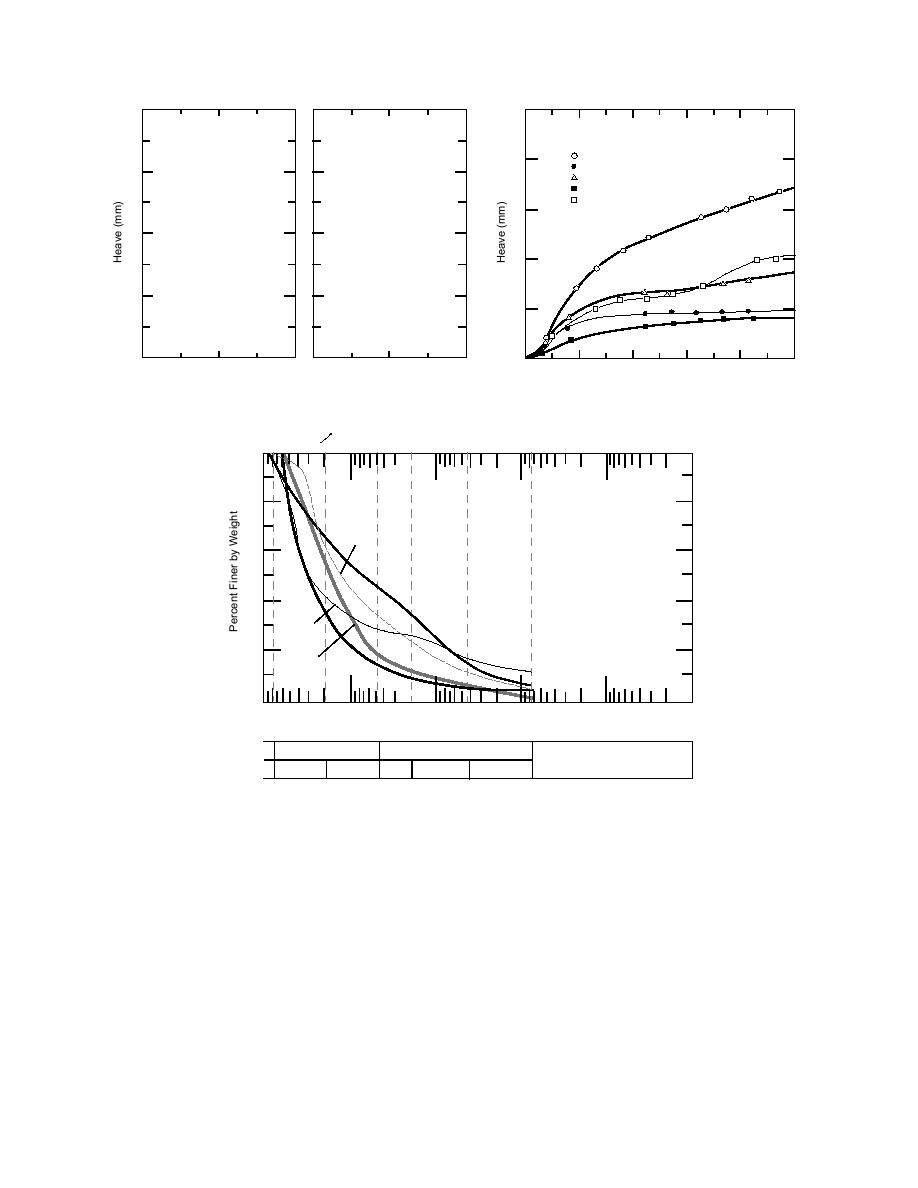
20
25
a.
b.
x
+
Mat'l. No. and
x
Saturation Moist. Cont. (%)
+
1 (0.4 %)
20
2 (0.5)
+
x
15 +
x
x
3 (0.3)
4 (0.5)
+
x
5 (0.5)
x
+
15
x
+
+
+++ + +
x
x
x
10
x
+
10
xx xx x
xx
+ +++
++
x
x
+
5
++
x
x
5
+
x
0
2 0
0
1
10
20
0
50
100
150
200
250
Saturation
Passing 200 Sieve (%)
Hours of Freezing
Moisture Content (%)
U.S. Std. Sieve Size and No.
Hydrometer
3
3
4
4
10
40
200
100
80
4
(0.5 %)
60
40
3 (0.3)
1 (0.4)
20
2 (0.5)
5 (0.5)
0
1.0
0.1
0.01
0.001
0
100
10
Grain Size (mm)
Gravel
Sand
Silt or Clay
C'rse
Fine
C'rse
Medium
Fine
Figure 8. Frost heave of hard limestones (1 in. = 25.4 mm).
Adding lime to clay soils causes the structure of
are soil type, quantity of cement, degree of mixing
the clay to flocculate. In the lime-stabilized mix-
and time of curing (Yoder and Witzcak 1975). Of
ture, after a chemical reaction with water (pozzo-
all the factors mentioned above, the cure time is
the critical factor. For example, after 20 days, a 5%
lanic action), cementation takes place, perhaps
through calcium silicate or aluminate bonding.
soil (CL) and cement mixture acquired an uncon-
The addition of a pozzolan, such as fly ash to lime,
fined compressive strength of approximately 4100
kPa (600 lb/in.2), and a 10% soilcement mixture
speeds up the cementation process and also pro-
duces extra strength. However, the quantities of
reached an approximate unconfined compressive
strength of 5500 kPa (800 lb/in.2). The amount of
fly ash required are generally high, 1020% (Yoder
and Witzcak 1975). The amount of lime added is
portland cement used for strength improvement
about 2 to 5% by weight.
varies around 915% for sandy soils, base, and
Portland cement, when added to soils, hardens
subbase and around 59% for clean clays. Highly
the mixture through hydration of the cement. Fac-
plastic soils (CH) may require 1520% cement by
tors that affect the portland cementsoil mixture
weight to bring about hardening.
13



 Previous Page
Previous Page
